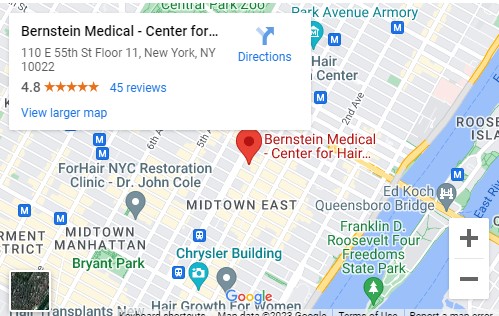Q: Why does the ARTAS® Robotic System only do FUE, not FUT? — V.Z., Chicago, Illinois
A: Currently the robot is only used for harvesting grafts from the donor area. In FUE, the doctor punches out hundreds to thousands of individual follicular units from the back and sides of the scalp by hand using a small round instrument called a punch.The punch has to be held at exactly the right angle, with just the right pressure applied, stopped at a precise depth and, during this time, rotated (or spun mechanically) without changing the alignment.
As one can imagine, this exhaustingly tedious process can best be done using the precision of a robotic device.
In FUT, the harvesting is done by a surgeon using a scalpel to make a long incision in the back of the scalp. It only takes a few minutes. The harvested strip is removed and then placed under dissecting microscopes where the individual follicular units are isolated. This dissection, thus far, can only be done by hand. There is no robotic technology available to do this.
Harvesting the donor hair, of course, is only one part of a hair transplant. The other steps, recipient site creation (making the holes that the grafts are placed into) and actually placing the grafts into those sites are similar in both FUE and FUT.
It is anticipated that robotic site creation will be available in the fall of 2014 and robotic graft placement, the third and final step, about two years after that. At that time, the robot will be able to perform the entire FUE procedure and the last two parts of the FUT procedure.
Of course, the robot doesn’t do the surgery alone. The physician must input all the information regarding the design and planning of the procedure and closely monitor each step of the robotic process. Unlike automating industrial production, the human scalp has great variability, so there is no one formula that will be appropriate for every patient. Physician skill and involvement is just as important in robotic hair transplantation as it is with every other type of surgical hair restoration procedure.


 Dr. Bernstein introduced new technology that allows the ARTAS Robotic System to accomplish a critical step in hair transplant surgery, the creation of recipient sites. Presenting at the 2nd ARTAS User Group Meeting on February 7th and 8th, 2014, Dr. Bernstein previewed the recipient site creation technology that brings the robotic system one step closer to performing critical aspects of the labor-intensive, hair transplant procedure.
Dr. Bernstein introduced new technology that allows the ARTAS Robotic System to accomplish a critical step in hair transplant surgery, the creation of recipient sites. Presenting at the 2nd ARTAS User Group Meeting on February 7th and 8th, 2014, Dr. Bernstein previewed the recipient site creation technology that brings the robotic system one step closer to performing critical aspects of the labor-intensive, hair transplant procedure. Dr. Bernstein is featured in Columbia Business, the alumni magazine of the Columbia Business School, for having “revolutionized the field of hair restoration.” The article mentions his pioneering the FUT procedure — now recognized as the “gold standard” in surgical hair restoration — and robotic hair transplant surgery.
Dr. Bernstein is featured in Columbia Business, the alumni magazine of the Columbia Business School, for having “revolutionized the field of hair restoration.” The article mentions his pioneering the FUT procedure — now recognized as the “gold standard” in surgical hair restoration — and robotic hair transplant surgery. 


